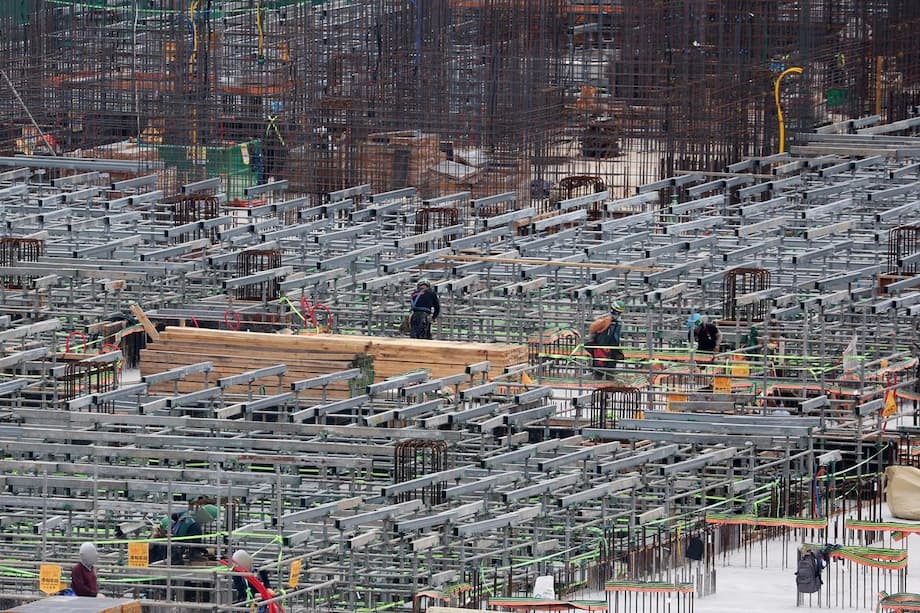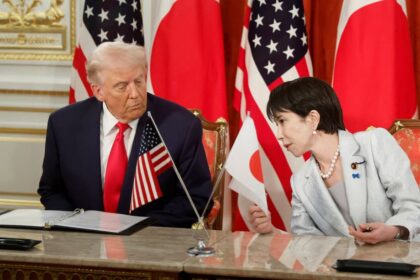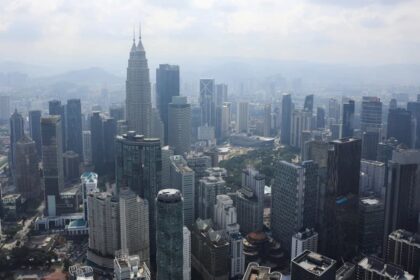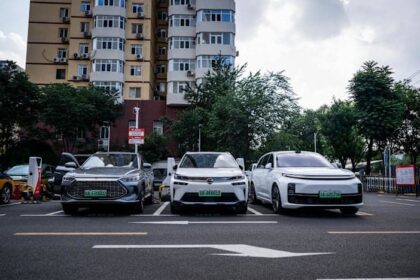Korean Economy Faces Stagnation as Construction Sector Falters
South Korea’s economy in 2025 is grappling with a pronounced slowdown, as a deepening slump in the construction sector erases much of the progress made by a rebound in domestic consumption. Despite government efforts to stimulate growth through supplementary budgets and policy interventions, the country’s growth outlook has been repeatedly downgraded, with leading think tanks and official agencies warning that the construction downturn is now the most significant drag on the nation’s economic prospects.
- Korean Economy Faces Stagnation as Construction Sector Falters
- How Did the Construction Slump Develop?
- Impact on Employment and the Broader Economy
- Why Is Domestic Consumption Not Enough?
- Official Growth Forecasts: A Bleak Consensus
- Government Response: Can AI and Innovation Reverse the Trend?
- Geopolitical and Trade Headwinds Add to Uncertainty
- What Lies Ahead for South Korea’s Economy?
- In Summary
How Did the Construction Slump Develop?
The roots of South Korea’s construction crisis stretch back over a year, with the sector experiencing a prolonged downturn marked by a string of high-profile bankruptcies and project delays. Major firms such as Shindonga Construction and Daezer Construction have entered debt restructuring or court receivership, while smaller regional companies have struggled to stay afloat. In 2024 alone, 2,666 construction companies closed their doors—a 13.6 percent increase from the previous year—and 30 firms filed for bankruptcy, the highest number since 2019.
This wave of closures and financial distress is largely attributed to a surge in construction costs, driven by high interest rates and rising prices for raw materials. The construction cost index soared by 29 percent between November 2020 and November 2024, reaching its highest level in decades. At the same time, the ratio of nonperforming real estate financing loans more than doubled, signaling a credit crunch that has made it increasingly difficult for developers to secure funding for new projects.
Since late 2024, construction output has been declining for seven consecutive months—the longest such streak since records began in 1997. Nationwide construction orders plummeted from 230 trillion won ($159.7 billion) in 2022 to 170 trillion won in 2024. The number of unsold housing units after completion reached 18,600, reflecting weak demand and oversupply in some areas.
Impact on Employment and the Broader Economy
The construction sector is a major employer in South Korea, and its downturn has had immediate consequences for the labor market. The number of construction workers fell to 2,011,000 in early 2025—a drop of 157,000 compared to the previous year and the lowest figure since the height of the COVID-19 pandemic. On average, the sector lost 49,000 jobs per month in 2024. While overall employment in the economy grew by 159,000 workers, this was less than half the increase seen in 2023, and the gains were concentrated in health and social services rather than construction or manufacturing.
Experts warn that the construction slump is not only a sectoral issue but a systemic risk to the entire economy. According to the Korea Institute for Industrial Economics & Trade (KIET), weak construction investment has contributed to South Korea’s low average growth rate of 2.2 percent from 2017 to 2023. The Bank of Korea forecasts that construction investment will shrink by 1.3 percent in 2025, while the Korea Development Institute (KDI) projects an even steeper decline of 8.1 percent—the worst since the Asian financial crisis in 1998.
Professor Kang Sung-jin of Korea University’s Department of Economics explained, “The construction industry is highly sensitive to economic conditions, and the sector’s downturn reflects how poorly the domestic economy is doing.”
KIET estimates that an injection of 5 trillion won into the sector could create 32,000 construction jobs and 22,000 jobs in related industries, boosting overall output by 5.1 trillion won. However, with credit tight and investor confidence low, such a turnaround remains elusive.
Why Is Domestic Consumption Not Enough?
Despite the gloom in construction, there are pockets of resilience in the Korean economy. Domestic consumption, which had been weak in the first half of the year, has shown signs of recovery. Household spending rose by 0.5 percent in the second quarter of 2025, and retail sales—after 13 consecutive quarters of decline—narrowed their fall to just 0.2 percent in April through June. Consumer sentiment has improved, with the index reaching 110.8 in July, its highest in nearly four years.
Government-issued recovery vouchers and supplementary budgets have played a role in supporting demand. Lower interest rates have also helped households manage debt and encouraged spending on clothing, cosmetics, and other semi-durable goods. However, these gains have not been enough to offset the drag from construction and other struggling sectors. Durable goods sales, such as home appliances, have fallen, and the labor market remains fragile, especially for young people and those in construction and manufacturing.
Exports, another traditional engine of growth, are expected to edge up by just 0.2 percent in 2025—a sharp drop from 8.1 percent growth the previous year. New U.S. tariffs on Korean goods and ongoing global trade uncertainty have weighed on export prospects, particularly in autos and steel, even as semiconductors and shipbuilding show some strength.
Official Growth Forecasts: A Bleak Consensus
The Ministry of Economy and Finance halved its 2025 growth forecast to 0.9 percent, the first time the projection has fallen below 1 percent since the COVID-19 pandemic. This is slightly more optimistic than the Bank of Korea, KDI, and the International Monetary Fund, which each project growth at 0.8 percent. The OECD expects global growth of 2.9 percent this year, with the U.S. and eurozone at 1.6 percent and 1 percent, respectively—highlighting Korea’s relative underperformance.
To reach even the modest 0.9 percent target, the economy would need to expand by the mid-1 percent range in the second half of the year, a goal officials admit will be challenging. The sharp downgrade in growth is attributed primarily to the construction sector, with investment projected to contract by more than 8 percent. The downturn is deeper and more prolonged than expected, and while new orders are gradually improving, a meaningful recovery is not anticipated until next year.
Inflation is expected to remain stable at around 2 percent, though higher processed food prices and household debt remain concerns. The current account surplus is forecast to narrow, reflecting a “recessionary surplus” where imports fall faster than exports due to weak domestic demand.
Government Response: Can AI and Innovation Reverse the Trend?
Faced with these challenges, the South Korean government has announced a series of ambitious initiatives aimed at transforming the economy and raising its long-term growth potential. A key pillar of this strategy is investment in artificial intelligence (AI) and advanced technologies. The finance ministry has unveiled a package of projects designed to position South Korea as a global leader in AI, robotics, autonomous driving, smart factories, and on-device AI chips.
These initiatives are part of President Lee Jae Myung’s pledge to elevate South Korea among the world’s top three AI powers and raise the nation’s potential growth rate to 3 percent. The government plans to drive AI transformation across 15 areas and strengthen the country’s AI talent base. Support will also go to private-sector efforts in advanced materials, green energy, biotech, content, beauty, and food. A new National Growth Fund with over 100 trillion won in capital, financed equally by state and private investors, will back these efforts.
However, critics argue that while the focus on AI and innovation is laudable, concrete funding measures are lacking, and structural challenges such as demographic decline, labor market polarization, and productivity gaps continue to weigh on growth potential. Some economists question whether AI should be framed as a macroeconomic strategy, noting that policies supporting highly educated workers and business investment are also needed.
Geopolitical and Trade Headwinds Add to Uncertainty
South Korea’s economic woes are compounded by a volatile global environment. Geopolitical risks, including an escalating trade war fueled by new U.S. tariffs and domestic political instability, have created additional headwinds. The Ministry of Economy and Finance’s monthly “Green Book” report has cited ongoing downward pressure for four consecutive months, highlighting persistent employment difficulties in construction and manufacturing.
The government has pledged to mobilize all available resources to implement job creation measures, provide financial support for low-income households, and assist small businesses. Active measures to address trade uncertainties, including support for companies affected by tariffs, are also in the works. Yet, the scale of the construction slump and the broader economic malaise mean that recovery will likely be slow and uneven.
What Lies Ahead for South Korea’s Economy?
Looking forward, most forecasts suggest only a modest rebound in 2026, with growth expected to recover to around 1.6 to 1.8 percent. This would still be well below the country’s historical average and insufficient to reverse the effects of years of stagnation. The government’s strategy hinges on stimulating investment—both in traditional sectors like construction and in emerging fields like AI—while managing the risks posed by global trade tensions and demographic decline.
Experts emphasize the need for swift advancement of major infrastructure projects, such as the development of new towns and expressways, to jumpstart construction activity and create jobs. At the same time, addressing the structural issues that have eroded Korea’s growth potential—such as an aging population, labor market rigidity, and productivity gaps—will be essential for sustained recovery.
KIET researcher Park Hoon noted, “To stimulate investment, the swifter advancement of major projects, such as the development of the ‘third new town’ or the completion of the Seoul-Sejong expressway, is needed.”
In Summary
- South Korea’s economy is stagnating in 2025, with growth forecasts downgraded to as low as 0.8 percent due to a severe construction slump.
- The construction sector has seen widespread bankruptcies, job losses, and a sharp decline in new projects, dragging down overall economic performance.
- Domestic consumption has shown resilience, aided by government stimulus and improved consumer sentiment, but is not enough to offset construction and export weaknesses.
- Exports are expected to grow only marginally, hampered by new U.S. tariffs and global trade uncertainty.
- The government is betting on AI and advanced technologies to drive future growth, but critics warn that deeper structural reforms are needed.
- Geopolitical risks and domestic political instability add to the uncertainty, making a swift recovery unlikely.
- Experts call for targeted investment in infrastructure and policies to address demographic and productivity challenges as essential steps toward sustainable growth.












